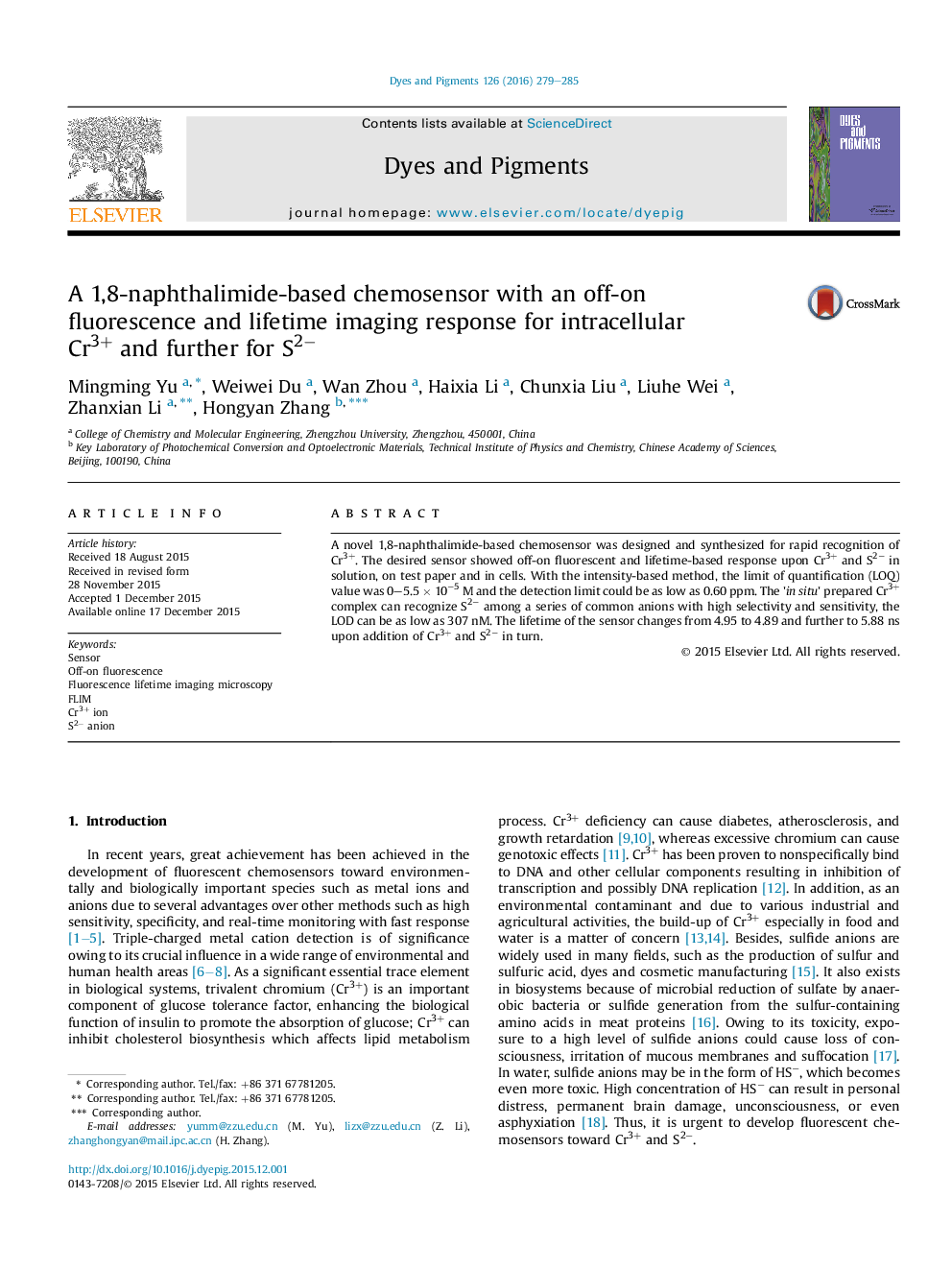| Article ID | Journal | Published Year | Pages | File Type |
|---|---|---|---|---|
| 175630 | Dyes and Pigments | 2016 | 7 Pages |
•A Cr3+ selective fluorescent “off-on” and lifetime-based chemosensor was synthesized.•The chemosensor was capable of quantitatively detect the concentration of Cr3+ by a dramatically enhanced fluorescence.•The 'in situ' prepared Cr3+ complex showed high selectivity and sensitivity toward S2−.•The calculated low detection limit (LOD) value is as low as 307 nM for S2−.•The lifetime changed from 4.95 to 4.89 ns upon the addition of Cr3+, and further increased to 5.88 ns upon addition of S2−.
A novel 1,8-naphthalimide-based chemosensor was designed and synthesized for rapid recognition of Cr3+. The desired sensor showed off-on fluorescent and lifetime-based response upon Cr3+ and S2− in solution, on test paper and in cells. With the intensity-based method, the limit of quantification (LOQ) value was 0–5.5 × 10−5 M and the detection limit could be as low as 0.60 ppm. The 'in situ' prepared Cr3+ complex can recognize S2− among a series of common anions with high selectivity and sensitivity, the LOD can be as low as 307 nM. The lifetime of the sensor changes from 4.95 to 4.89 and further to 5.88 ns upon addition of Cr3+ and S2− in turn.
Graphical abstractThe fluorescence and lifetime change of the chemosensor and the 'in situ' prepared Cr3+ complex upon addition of Cr3+ and S2− on test paper and in living cells have been successfully demonstrated.Figure optionsDownload full-size imageDownload as PowerPoint slide
